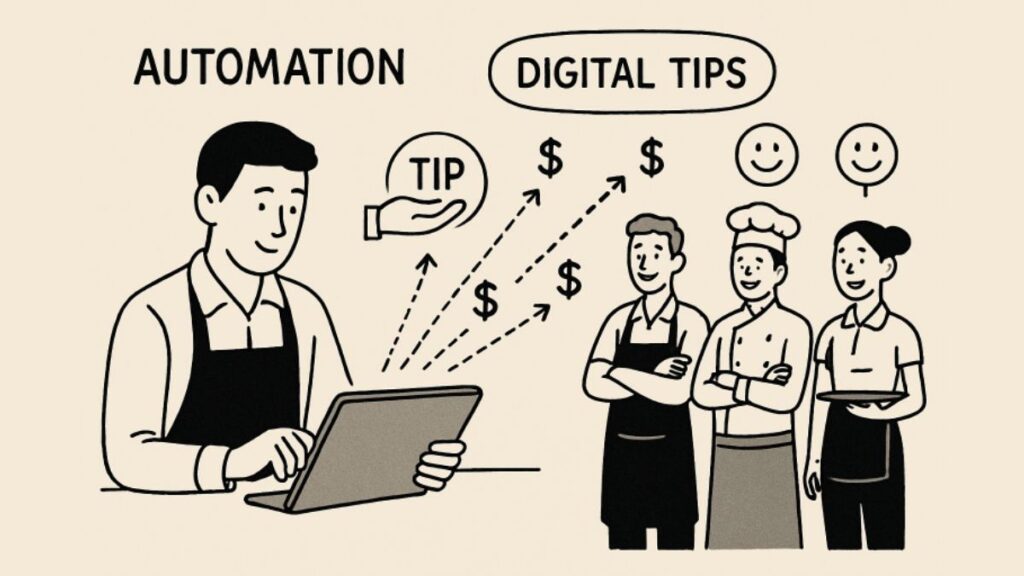Introduction
For restaurant owners and managers, managing employee tips is often a persistent challenge. Traditional, manual processes for calculating and distributing tips can be tedious, error-prone, and overwhelming, especially during busy shifts. As digital transformation sweeps across the hospitality industry, many businesses are seeking more streamlined and reliable methods. Modern tipping software emerges as a strategic solution, revolutionizing how restaurants handle tip calculations and payouts.
The rising trend toward tip automation is fueled not only by the potential to save valuable time but also by demands for increased transparency, regulatory compliance, and more equitable tip distribution. Automating these systems provides clear benefits for both operational efficiency and employee satisfaction, which directly impact a restaurant’s bottom line and staff retention rates.
The Challenges of Manual Tip Management
Manual tip management frequently involves a complicated blend of arithmetic calculations, physical cash handling, and handwritten record-keeping. Not only does this open the door to inevitable human error—such as miscalculations or even lost funds—but it also increases the risk of internal disputes and employee dissatisfaction. Worse yet, poorly kept records expose restaurants to compliance violations, particularly as labor laws and tax regulations become increasingly stringent.
Managers often find themselves dedicating excessive hours each week just to ensure accurate and fair distribution of tips. Even with the best intentions and attention to detail, manual processes can be disrupted by simple mistakes, leading to friction between staff and management or even financial penalties during an audit.
Advantages of Automating Tip Calculations
Increased Accuracy and Fairness
Automated tip calculation systems use precise algorithms to distribute tips based on predefined rules. This virtually eliminates the margin for error and guarantees fair, unbiased tip splitting among servers, bartenders, kitchen staff, and other team members, based on shifts, sales, or hours worked.
Operational Efficiency
By automating tip allocations and payouts, managers are freed from manual calculations, enabling them to focus on core operational challenges—improving service quality, monitoring customer satisfaction, and boosting overall revenue. Automation can save hours each week and reduce payroll bottlenecks during busy times.
Transparency and Compliance
Automated solutions provide a complete digital audit trail, making it simple to produce records for both internal reviews and government audits. This protects restaurants from liability while also increasing transparency for staff, who gain reassurance from being able to track tips owed and paid.
Automated tip management also helps businesses stay compliant with labor regulations, which continue to evolve. For further information on labor laws as they relate to the hospitality industry, you can review guidance from the U.S. Department of Labor. These systems can also reduce disputes between employees and management, fostering a more positive workplace environment. By streamlining tip distribution and recordkeeping, restaurants can focus more on service quality and customer experience.
Implementing Electronic Tip Payout Solutions
The integration of electronic tip management solutions with existing point-of-sale (POS) or payroll systems is increasingly straightforward and cost-effective. With the right platform, automated tip calculation becomes seamless—tips are pooled according to preset rules and electronically distributed, often directly into employee bank accounts. According to Forbes, the rise of digital tipping is reshaping workplace culture, making tip management more transparent and efficient for both employers and staff.
Eliminating cash handling not only reduces the risk of theft or loss but also streamlines end-of-shift reconciliation. Modern electronic systems can also provide employees with mobile app access to view their payout history, increasing trust and satisfaction. Integrating digital tip payout solutions reduces manual paperwork, speeds payroll processing, and makes staff happier.
Considerations for Choosing the Right System
- Integration: Prioritize solutions that seamlessly integrate with existing POS and payroll systems to minimize disruption.
- Customization: Look for flexibility in configuring tip-pooling strategies, whether you allocate by percentage, hours, or shifts.
- Transparency: Opt for systems with transparent reporting and user-friendly dashboards so managers and staff can always verify tip distribution and payouts.
- Support and Security: Evaluate the provider’s reputation, ongoing technical support, and commitment to data protection to safeguard sensitive employee financial information.
It’s also wise to solicit feedback from managers and employees before finalizing a solution to ensure strong adoption and smooth transitions.
Conclusion
Automating tip calculations and payouts proves highly advantageous for restaurants aiming to boost efficiency, accuracy, and regulatory compliance. When managers no longer need to struggle with manual tip distribution, their valuable time and attention are redirected to strategic priorities—improving service, staff retention, and customer experience. By strategically selecting and carefully implementing the right solution, the restaurant industry can foster a more transparent, compliant, and employee-friendly workplace—precisely the foundation for sustained business growth.






